Volcanoes Litscimed
Download as pptx, pdf1 like242 views
Jackie Mountain's presentation
1 of 12
Download to read offline
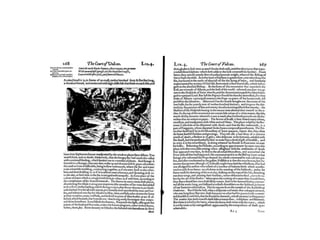

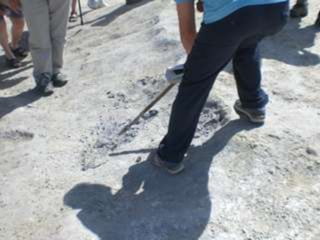
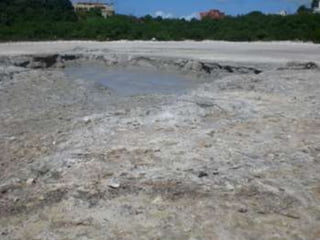
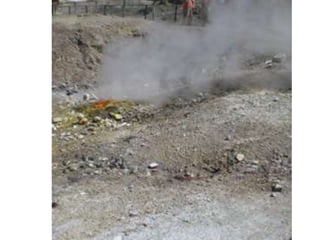
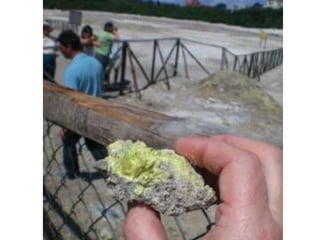
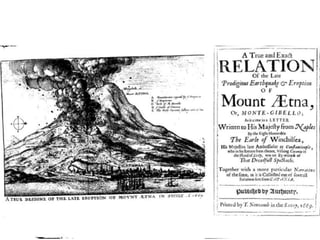
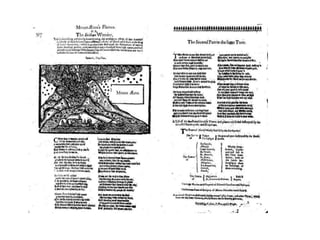
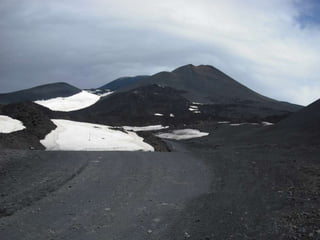
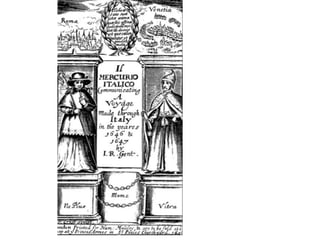
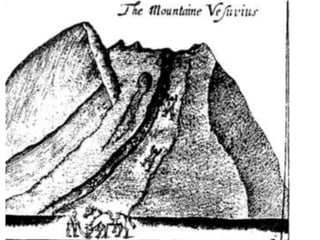
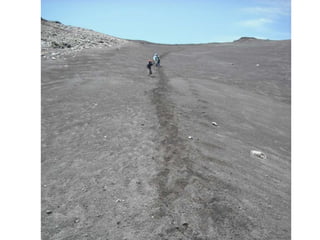
Ad
Recommended
Andrewnightingale
AndrewnightingaleLitSciMed .
?
The document discusses several topics related to intelligence including thought experiments, the Turing test, poetry, and simulations. It examines how thought experiments influence research and are tested or constrained. Different methods for generating text like recursive transition networks and automation are also covered. The concept of disruption, dissociation, deception and simulation are explored in the context of testing intelligence.Brian Hurwitz
Brian HurwitzLitSciMed .
?
The document discusses the clinical case report as a narrative form. It notes that case reports have been used since Hippocratic times to describe individual patient cases. A case report provides a linguistic portrait of a patient through presenting their story conversationally or formally. It includes testimonies, observations both external and internal, descriptions and analysis of fluids, tissues and imaging, as well as responses to treatment.Lit Sci Med Presentation
Lit Sci Med PresentationLitSciMed .
?
This document discusses the emergence and cultural constructions of "Woolsorters' Disease", later identified as anthrax, in Bradford, England from 1878 to 1919. It describes how the disease was initially thought to be caused by "dirty foreign wools" but research demonstrated the causative organism was Bacillus anthracis. It also discusses how representations of the disease shifted from a "folk" understanding to systematic medical research, but engagement with sufferers continued through compensation and demonstrations. Finally, it notes understandings of anthrax depended on specific social contexts and industries, and how different research communities reflected differences in cultural constructions of foreign countries.Colin Baker Theories And Methods Literature, Science And Medicine
Colin Baker Theories And Methods Literature, Science And MedicineLitSciMed .
?
The document discusses the rise of medical journalism in 19th century Britain, where 479 medical periodicals were launched. It describes the different types of periodicals and the small amount of existing historiography that treats medical journals as active historical documents rather than just passive sources of information. The document calls for further exploration of how medical periodicals served as an active social force through campaigning, shaping medical education and knowledge, advocating for fringe medical ideas, and changing the relationship between doctors and patients.010510 Ck Thesis Presentation V.02
010510 Ck Thesis Presentation V.02LitSciMed .
?
This document provides an overview of cultural representations of HIV/AIDS in various media such as literature, drama, fiction, and non-fiction narratives. It discusses how HIV/AIDS was initially viewed as a punishment for homosexuals and society. It also explores the metaphorical importance of AIDS and how representations have shifted over time from viewing it as a plague to recognizing those living with AIDS as citizens. The document analyzes several literary and cultural works that have shaped understandings of HIV/AIDS.Dunn 2 july presentation
Dunn 2 july presentationLitSciMed .
?
This document discusses a sextant from 1792 that is in the collection of the National Maritime Museum in Greenwich. It provides details on the object, including that it was signed by the maker Jesse Ramsden in London. The document also discusses the manufacture of the sextant and Ramsden's dividing engine technique. Previous owners of the sextant are mentioned, including John Ommaney who served on a voyage to China in 1792-3, and Admiral Purey-Cust who eventually donated it to the museum. An interpretation of the sextant is also provided in one of the museum displays focusing on the invention of the sextant.Victorian medicine and masculinity at home and abroad
Victorian medicine and masculinity at home and abroadLitSciMed .
?
This document discusses Michael Brown's lecture on the topic of Victorian medicine and masculinity. The first half of the lecture explores how 19th century doctors compared themselves to soldiers and invoked language of war and heroism. This military metaphor became dominant and served political ends by framing medicine as public service. Literature from this time period also portrayed doctors heroically. The Crimean War further conflated medical and martial masculinities. By the 1850s, medical discourse was saturated with war imagery and concepts of martial masculinity, influenced by growing nationalism and imperialism.Things
ThingsLitSciMed .
?
This document discusses various perspectives on things and objects from the fields of philosophy, sociology, and cultural studies. It explores how objects can assert themselves as things when they stop functioning for human subjects. It examines the distinction between objects and things, and how things exist beyond just their signified use or meaning. It also looks at how humans exist in relation to objects, and how objects can act as quasi-subjects that help construct social relationships and individual identities. The document advocates studying the role of material objects in shaping culture.Things bibliography
Things bibliographyLitSciMed .
?
This document provides a list of scholarly sources to read about thing theory and the study of objects and material culture. It includes books and articles that discuss objects from perspectives such as commodity and consumer culture, literary representations of things, philosophical understandings of objects and object-oriented ontology, psychoanalytic approaches, and the social lives and meanings of everyday things. Major authors mentioned include Arjun Appadurai, Jean Baudrillard, Jane Bennett, Bill Brown, Bruno Latour, Daniel Miller, and Sherry Turkle.Event 5 feedback
Event 5 feedbackLitSciMed .
?
The students provided positive and negative feedback on Event 5. Positively, they noted interesting lectures and discussions on a wide range of topics. They appreciated opportunities to network with other students. However, some critiques included that Day 1 lacked structure and was too brief, not allowing time to view collections at Blythe House. The location and accommodation also received some criticism for not being optimal.The man in the white suit no pix
The man in the white suit no pixLitSciMed .
?
The Man in the White Suit is a 1951 British film about a textile chemist named Sidney Stratton who invents an indestructible synthetic fabric called the "white suit." The film examines Stratton as an eccentric scientist obsessed with his experiment. It also depicts the realistic 1950s British textile industry and laboratories of the time, as well as themes of industrial innovation, the public perception of science, and the conflict between lone inventors and corporations. Stratton's fabric threatens the business models of the textile industry firms who seek to suppress his invention.Event 4 feedback
Event 4 feedbackLitSciMed .
?
The document summarizes student feedback from Event 4 of the LitSciMed training program. Key points included:
- Students appreciated the relevant and approachable speaker presentations, as well as the opportunity to discuss their work. The location and event structure were also praised.
- Suggested improvements were providing shorter reading lists, more guidance for the poetry discussion when a speaker was absent, and inviting a poet to do a reading.
- The organization, intellectual stimulation from speakers across disciplines, and relaxed atmosphere were highlighted. Some asked for more time for discussion, input from scientists, or preparation for poetry analysis activities.
- Overall, students found the event very well done and said it achieved the right balance of topicsEvent 3 feedback
Event 3 feedbackLitSciMed .
?
The document summarizes feedback from 14 students who attended Event 3 of the LitSciMed Project in July 2010. Key highlights included:
- Students enjoyed tours of the National Maritime Museum and Royal Institution, as well as handling original manuscripts and other archival materials.
- Educational sessions with Crosbie Smith and David Knights were praised as inspirational and for modeling interdisciplinary approaches.
- Students benefited from networking with others from different disciplines but united by common research interests.
- Suggested improvements included providing hotel recommendations, distributing readings more evenly, and allowing more time for exploration of the museum sites.Knight handout papers Event 3
Knight handout papers Event 3LitSciMed .
?
The document discusses various papers and objects related to Romantic-era scientists like Humphry Davy and Michael Faraday. It notes that Davy's papers at the Royal Institution help place him in the cultural context of his time. Science was conducted not just in dedicated laboratories but also portable setups that could be used in fields or homes. The document also discusses collections at the Linnean Society containing the papers of William Swainson, a lithographer and artist who struggled financially from his scientific career in Regency-era Britain. His system of classification failed to catch on. The interrelated stories discussed provide context about the period between 1800-1830 in Britain.Group work for Event 3
Group work for Event 3LitSciMed .
?
This document provides guidance for students preparing a scholarly edition of a manuscript. It asks them to describe the manuscript, transcribe it faithfully, and explains why examining the original manuscript is important. It also addresses how to handle mistakes, revisions, different versions, and annotations in the transcription and edited text. The goal is to produce an edition that faithfully represents the original while making it accessible to modern readers.Knight handout papers Event 3
Knight handout papers Event 3LitSciMed .
?
The document discusses various papers and objects related to Romantic-era scientists like Humphry Davy and Michael Faraday. It notes that Davy's papers at the Royal Institution help place him in the cultural context of his time. Science was conducted not just in dedicated laboratories but also portable setups that could be used in fields or homes. The document also discusses collections at the Linnean Society containing the papers of William Swainson, a lithographer and artist who struggled financially from his scientific career in Regency-era Britain. His system of classification failed to catch on. The interrelated stories discussed provide context about the period between 1800-1830 in Britain.Ready, Steady, Cook!
Ready, Steady, Cook!LitSciMed .
?
This document provides an overview of an exhibit at the National Maritime Museum focused on food, cooking, and dining on 18th century ships. The exhibit includes paintings depicting life onboard ships, an interactive section showing a ship interior, and a section exploring culinary cultures such as that of Tahiti. All images in the exhibit are property of the National Maritime Museum.Excursions into surrogate worlds
Excursions into surrogate worldsLitSciMed .
?
This document discusses social constructionism and its key assumptions of taking a critical view of common knowledge, understanding knowledge as historically and culturally specific, and knowledge being sustained through social processes where knowledge and action are linked. It provides a quote from The Third Policeman about something faultless and delightful that reminded the author of something unfamiliar.Transit of venus 1769
Transit of venus 1769LitSciMed .
?
The document discusses the Transit of Venus in 1769. Pictures from the event are owned by the National Maritime Museum. The rare astronomical event involves the planet Venus passing directly between the Earth and the Sun, allowing scientists to measure the distance between Earth and Venus.Spears, clubs, and shooting walruses
Spears, clubs, and shooting walrusesLitSciMed .
?
This document describes four Polynesian artifacts collected during Captain Cook's voyages in the late 18th century, including a wooden spear from before 1778, a Kotiate (Wooden Hand Club) from before 1773, and depicts spears, clubs, and depictions of shooting walruses. All of the artifacts and pictures are owned by the National Maritime Museum.Litscimed film competion
Litscimed film competionLitSciMed .
?
The Wellcome Trust Centre for the History of Medicine at University College London is holding the LitSciMed Film Competition. The competition invites entrants to create short films up to 5 minutes in length on topics related to their research. The goal is to explore alternative media for presenting scholarly content. Entries must be uploaded to YouTube by June 1, 2010. The top 3 entries will receive prizes. Copyrighted material from other sources can be used if they are acknowledged and credited properly under Creative Commons licensing. A variety of resources for images, film clips, and sound effects that can be used within Creative Commons guidelines are provided.Objects, literature, and science
Objects, literature, and scienceLitSciMed .
?
The document discusses the use of objects in literary and scientific research. It references Matthew Baillie's 1793 work "The Morbid Anatomy of Some of the Most Important Parts of the Body" which examined changes in bodily structures from diseases. It also mentions Joanna Baillie's "Introductory Discourse" to her plays which explored how objects like an "unquiet mind" or "restless eye" can engage an audience's attention. The document poses questions about how objects could be used in text-based research and how researchers could incorporate objects into their own work.What sort of a Narrative is the Clinical Case Report?
What sort of a Narrative is the Clinical Case Report?LitSciMed .
?
The document discusses the nature of clinical case reports as narratives, exploring their historical development from Hippocratic to contemporary times. It emphasizes that case reports serve as representational tools and linguistic portraits rather than mere medical records. The talk by Brian Hurwitz also touches on the various forms and purposes of case reports, highlighting their role in conveying personal experiences and observations related to illness.Wellcome Library’s Collections – An Introduction
Wellcome Library’s Collections – An IntroductionLitSciMed .
?
The document provides an introduction to the collections of the Wellcome Library, including an overview of its origins and unifying themes. It describes Sir Henry Wellcome's extensive collections focusing on the history of medicine which formed the basis of the Library. The Library houses diverse special collections spanning from medieval texts to contemporary born-digital materials, covering topics from alchemy to psychiatry. It aims to balance representing notable figures with ordinary practitioners. The Library's online resources provide broad access to its collections.Online Resources at the Wellcome Library
Online Resources at the Wellcome LibraryLitSciMed .
?
The document summarizes online resources available through the Wellcome Library including their catalogue, image collections, archives, electronic resources, and digitized collections. It provides tips for searching and accessing these tools, such as using controlled vocabulary and wildcards, saving records, and subscribing to RSS feeds. Contact information is provided for questions.What sort of a Narrative is the Clinical Case Report?
What sort of a Narrative is the Clinical Case Report?LitSciMed .
?
The document discusses the narrative structure of clinical case reports, tracing their evolution from Hippocratic records to modern practices. It emphasizes case reports as representational tools that serve as narratives, incorporating personal testimonies and observations rather than merely being medical records. The presentation of these reports can vary from informal conversations to formal analyses.Objects, Literature, and Science
Objects, Literature, and ScienceLitSciMed .
?
The document discusses the use of objects in literary and scientific research. It references Matthew Baillie's 1793 work "The Morbid Anatomy of Some of the Most Important Parts of the Body" which examined changes in bodily structures from diseases. Joanna Baillie's "Introductory Discourse" explored how examining people's behaviors and emotions could provide insights. The document asks how objects could be incorporated into text-based research and provides examples of how they have been used historically in medical and literary works to study human anatomy and conditions.仿制颁厂鲍厂学费单美国加利福尼亚州立大学萨克拉门托分校毕业证范本,颁厂鲍厂文凭
仿制颁厂鲍厂学费单美国加利福尼亚州立大学萨克拉门托分校毕业证范本,颁厂鲍厂文凭taqyed
?
鉴于此,办理CSUS大学毕业证加利福尼亚州立大学萨克拉门托分校毕业证书【q薇1954292140】留学一站式办理学历文凭直通车(加利福尼亚州立大学萨克拉门托分校毕业证CSUS成绩单原版加利福尼亚州立大学萨克拉门托分校学位证假文凭)未能正常毕业?【q薇1954292140】办理加利福尼亚州立大学萨克拉门托分校毕业证成绩单/留信学历认证/学历文凭/使馆认证/留学回国人员证明/录取通知书/Offer/在读证明/成绩单/网上存档永久可查!
如果您处于以下几种情况:
◇在校期间,因各种原因未能顺利毕业……拿不到官方毕业证
◇面对父母的压力,希望尽快拿到;
◇不清楚认证流程以及材料该如何准备;
◇回国时间很长,忘记办理;
◇回国马上就要找工作,办给用人单位看;
◇企事业单位必须要求办理的
◇需要报考公务员、购买免税车、落转户口
◇申请留学生创业基金
【办理加利福尼亚州立大学萨克拉门托分校成绩单Buy California State University, Sacramento Transcripts】
购买日韩成绩单、英国大学成绩单、美国大学成绩单、澳洲大学成绩单、加拿大大学成绩单(q微1954292140)新加坡大学成绩单、新西兰大学成绩单、爱尔兰成绩单、西班牙成绩单、德国成绩单。成绩单的意义主要体现在证明学习能力、评估学术背景、展示综合素质、提高录取率,以及是作为留信认证申请材料的一部分。
加利福尼亚州立大学萨克拉门托分校成绩单能够体现您的的学习能力,包括加利福尼亚州立大学萨克拉门托分校课程成绩、专业能力、研究能力。(q微1954292140)具体来说,成绩报告单通常包含学生的学习技能与习惯、各科成绩以及老师评语等部分,因此,成绩单不仅是学生学术能力的证明,也是评估学生是否适合某个教育项目的重要依据!More Related Content
More from LitSciMed . (20)
Things bibliography
Things bibliographyLitSciMed .
?
This document provides a list of scholarly sources to read about thing theory and the study of objects and material culture. It includes books and articles that discuss objects from perspectives such as commodity and consumer culture, literary representations of things, philosophical understandings of objects and object-oriented ontology, psychoanalytic approaches, and the social lives and meanings of everyday things. Major authors mentioned include Arjun Appadurai, Jean Baudrillard, Jane Bennett, Bill Brown, Bruno Latour, Daniel Miller, and Sherry Turkle.Event 5 feedback
Event 5 feedbackLitSciMed .
?
The students provided positive and negative feedback on Event 5. Positively, they noted interesting lectures and discussions on a wide range of topics. They appreciated opportunities to network with other students. However, some critiques included that Day 1 lacked structure and was too brief, not allowing time to view collections at Blythe House. The location and accommodation also received some criticism for not being optimal.The man in the white suit no pix
The man in the white suit no pixLitSciMed .
?
The Man in the White Suit is a 1951 British film about a textile chemist named Sidney Stratton who invents an indestructible synthetic fabric called the "white suit." The film examines Stratton as an eccentric scientist obsessed with his experiment. It also depicts the realistic 1950s British textile industry and laboratories of the time, as well as themes of industrial innovation, the public perception of science, and the conflict between lone inventors and corporations. Stratton's fabric threatens the business models of the textile industry firms who seek to suppress his invention.Event 4 feedback
Event 4 feedbackLitSciMed .
?
The document summarizes student feedback from Event 4 of the LitSciMed training program. Key points included:
- Students appreciated the relevant and approachable speaker presentations, as well as the opportunity to discuss their work. The location and event structure were also praised.
- Suggested improvements were providing shorter reading lists, more guidance for the poetry discussion when a speaker was absent, and inviting a poet to do a reading.
- The organization, intellectual stimulation from speakers across disciplines, and relaxed atmosphere were highlighted. Some asked for more time for discussion, input from scientists, or preparation for poetry analysis activities.
- Overall, students found the event very well done and said it achieved the right balance of topicsEvent 3 feedback
Event 3 feedbackLitSciMed .
?
The document summarizes feedback from 14 students who attended Event 3 of the LitSciMed Project in July 2010. Key highlights included:
- Students enjoyed tours of the National Maritime Museum and Royal Institution, as well as handling original manuscripts and other archival materials.
- Educational sessions with Crosbie Smith and David Knights were praised as inspirational and for modeling interdisciplinary approaches.
- Students benefited from networking with others from different disciplines but united by common research interests.
- Suggested improvements included providing hotel recommendations, distributing readings more evenly, and allowing more time for exploration of the museum sites.Knight handout papers Event 3
Knight handout papers Event 3LitSciMed .
?
The document discusses various papers and objects related to Romantic-era scientists like Humphry Davy and Michael Faraday. It notes that Davy's papers at the Royal Institution help place him in the cultural context of his time. Science was conducted not just in dedicated laboratories but also portable setups that could be used in fields or homes. The document also discusses collections at the Linnean Society containing the papers of William Swainson, a lithographer and artist who struggled financially from his scientific career in Regency-era Britain. His system of classification failed to catch on. The interrelated stories discussed provide context about the period between 1800-1830 in Britain.Group work for Event 3
Group work for Event 3LitSciMed .
?
This document provides guidance for students preparing a scholarly edition of a manuscript. It asks them to describe the manuscript, transcribe it faithfully, and explains why examining the original manuscript is important. It also addresses how to handle mistakes, revisions, different versions, and annotations in the transcription and edited text. The goal is to produce an edition that faithfully represents the original while making it accessible to modern readers.Knight handout papers Event 3
Knight handout papers Event 3LitSciMed .
?
The document discusses various papers and objects related to Romantic-era scientists like Humphry Davy and Michael Faraday. It notes that Davy's papers at the Royal Institution help place him in the cultural context of his time. Science was conducted not just in dedicated laboratories but also portable setups that could be used in fields or homes. The document also discusses collections at the Linnean Society containing the papers of William Swainson, a lithographer and artist who struggled financially from his scientific career in Regency-era Britain. His system of classification failed to catch on. The interrelated stories discussed provide context about the period between 1800-1830 in Britain.Ready, Steady, Cook!
Ready, Steady, Cook!LitSciMed .
?
This document provides an overview of an exhibit at the National Maritime Museum focused on food, cooking, and dining on 18th century ships. The exhibit includes paintings depicting life onboard ships, an interactive section showing a ship interior, and a section exploring culinary cultures such as that of Tahiti. All images in the exhibit are property of the National Maritime Museum.Excursions into surrogate worlds
Excursions into surrogate worldsLitSciMed .
?
This document discusses social constructionism and its key assumptions of taking a critical view of common knowledge, understanding knowledge as historically and culturally specific, and knowledge being sustained through social processes where knowledge and action are linked. It provides a quote from The Third Policeman about something faultless and delightful that reminded the author of something unfamiliar.Transit of venus 1769
Transit of venus 1769LitSciMed .
?
The document discusses the Transit of Venus in 1769. Pictures from the event are owned by the National Maritime Museum. The rare astronomical event involves the planet Venus passing directly between the Earth and the Sun, allowing scientists to measure the distance between Earth and Venus.Spears, clubs, and shooting walruses
Spears, clubs, and shooting walrusesLitSciMed .
?
This document describes four Polynesian artifacts collected during Captain Cook's voyages in the late 18th century, including a wooden spear from before 1778, a Kotiate (Wooden Hand Club) from before 1773, and depicts spears, clubs, and depictions of shooting walruses. All of the artifacts and pictures are owned by the National Maritime Museum.Litscimed film competion
Litscimed film competionLitSciMed .
?
The Wellcome Trust Centre for the History of Medicine at University College London is holding the LitSciMed Film Competition. The competition invites entrants to create short films up to 5 minutes in length on topics related to their research. The goal is to explore alternative media for presenting scholarly content. Entries must be uploaded to YouTube by June 1, 2010. The top 3 entries will receive prizes. Copyrighted material from other sources can be used if they are acknowledged and credited properly under Creative Commons licensing. A variety of resources for images, film clips, and sound effects that can be used within Creative Commons guidelines are provided.Objects, literature, and science
Objects, literature, and scienceLitSciMed .
?
The document discusses the use of objects in literary and scientific research. It references Matthew Baillie's 1793 work "The Morbid Anatomy of Some of the Most Important Parts of the Body" which examined changes in bodily structures from diseases. It also mentions Joanna Baillie's "Introductory Discourse" to her plays which explored how objects like an "unquiet mind" or "restless eye" can engage an audience's attention. The document poses questions about how objects could be used in text-based research and how researchers could incorporate objects into their own work.What sort of a Narrative is the Clinical Case Report?
What sort of a Narrative is the Clinical Case Report?LitSciMed .
?
The document discusses the nature of clinical case reports as narratives, exploring their historical development from Hippocratic to contemporary times. It emphasizes that case reports serve as representational tools and linguistic portraits rather than mere medical records. The talk by Brian Hurwitz also touches on the various forms and purposes of case reports, highlighting their role in conveying personal experiences and observations related to illness.Wellcome Library’s Collections – An Introduction
Wellcome Library’s Collections – An IntroductionLitSciMed .
?
The document provides an introduction to the collections of the Wellcome Library, including an overview of its origins and unifying themes. It describes Sir Henry Wellcome's extensive collections focusing on the history of medicine which formed the basis of the Library. The Library houses diverse special collections spanning from medieval texts to contemporary born-digital materials, covering topics from alchemy to psychiatry. It aims to balance representing notable figures with ordinary practitioners. The Library's online resources provide broad access to its collections.Online Resources at the Wellcome Library
Online Resources at the Wellcome LibraryLitSciMed .
?
The document summarizes online resources available through the Wellcome Library including their catalogue, image collections, archives, electronic resources, and digitized collections. It provides tips for searching and accessing these tools, such as using controlled vocabulary and wildcards, saving records, and subscribing to RSS feeds. Contact information is provided for questions.What sort of a Narrative is the Clinical Case Report?
What sort of a Narrative is the Clinical Case Report?LitSciMed .
?
The document discusses the narrative structure of clinical case reports, tracing their evolution from Hippocratic records to modern practices. It emphasizes case reports as representational tools that serve as narratives, incorporating personal testimonies and observations rather than merely being medical records. The presentation of these reports can vary from informal conversations to formal analyses.Objects, Literature, and Science
Objects, Literature, and ScienceLitSciMed .
?
The document discusses the use of objects in literary and scientific research. It references Matthew Baillie's 1793 work "The Morbid Anatomy of Some of the Most Important Parts of the Body" which examined changes in bodily structures from diseases. Joanna Baillie's "Introductory Discourse" explored how examining people's behaviors and emotions could provide insights. The document asks how objects could be incorporated into text-based research and provides examples of how they have been used historically in medical and literary works to study human anatomy and conditions.Recently uploaded (20)
仿制颁厂鲍厂学费单美国加利福尼亚州立大学萨克拉门托分校毕业证范本,颁厂鲍厂文凭
仿制颁厂鲍厂学费单美国加利福尼亚州立大学萨克拉门托分校毕业证范本,颁厂鲍厂文凭taqyed
?
鉴于此,办理CSUS大学毕业证加利福尼亚州立大学萨克拉门托分校毕业证书【q薇1954292140】留学一站式办理学历文凭直通车(加利福尼亚州立大学萨克拉门托分校毕业证CSUS成绩单原版加利福尼亚州立大学萨克拉门托分校学位证假文凭)未能正常毕业?【q薇1954292140】办理加利福尼亚州立大学萨克拉门托分校毕业证成绩单/留信学历认证/学历文凭/使馆认证/留学回国人员证明/录取通知书/Offer/在读证明/成绩单/网上存档永久可查!
如果您处于以下几种情况:
◇在校期间,因各种原因未能顺利毕业……拿不到官方毕业证
◇面对父母的压力,希望尽快拿到;
◇不清楚认证流程以及材料该如何准备;
◇回国时间很长,忘记办理;
◇回国马上就要找工作,办给用人单位看;
◇企事业单位必须要求办理的
◇需要报考公务员、购买免税车、落转户口
◇申请留学生创业基金
【办理加利福尼亚州立大学萨克拉门托分校成绩单Buy California State University, Sacramento Transcripts】
购买日韩成绩单、英国大学成绩单、美国大学成绩单、澳洲大学成绩单、加拿大大学成绩单(q微1954292140)新加坡大学成绩单、新西兰大学成绩单、爱尔兰成绩单、西班牙成绩单、德国成绩单。成绩单的意义主要体现在证明学习能力、评估学术背景、展示综合素质、提高录取率,以及是作为留信认证申请材料的一部分。
加利福尼亚州立大学萨克拉门托分校成绩单能够体现您的的学习能力,包括加利福尼亚州立大学萨克拉门托分校课程成绩、专业能力、研究能力。(q微1954292140)具体来说,成绩报告单通常包含学生的学习技能与习惯、各科成绩以及老师评语等部分,因此,成绩单不仅是学生学术能力的证明,也是评估学生是否适合某个教育项目的重要依据!在线购买西班牙毕业证安东尼奥·德·内夫里哈大学文凭鲍础狈贰学费单
在线购买西班牙毕业证安东尼奥·德·内夫里哈大学文凭鲍础狈贰学费单Taqyea
?
1:1原版安东尼奥·德·内夫里哈大学毕业证+UANE成绩单【Q微:1954 292 140】鉴于此,UANEdiploma安东尼奥·德·内夫里哈大学挂科处理解决方案UANE毕业证成绩单专业服务学历认证【Q微:1954 292 140】办理教育部学历认证,留学回国证明,安东尼奥·德·内夫里哈大学毕业证、安东尼奥·德·内夫里哈大学成绩单、安东尼奥·德·内夫里哈大学文凭(留信学历认证+永久存档查询)办理本科+硕士+博士毕业证成绩单学历认证,我们一直是留学生的首选,质量行业第一,诚信可靠。
【安东尼奥·德·内夫里哈大学成绩单一站式办理专业技术完美呈现Universidad Antonio de Nebrija Transcripts】
购买日韩成绩单、英国大学成绩单、美国大学成绩单、澳洲大学成绩单、加拿大大学成绩单(q微1954292140)新加坡大学成绩单、新西兰大学成绩单、爱尔兰成绩单、西班牙成绩单、德国成绩单。成绩单的意义主要体现在证明学习能力、评估学术背景、展示综合素质、提高录取率,以及是作为留信认证申请材料的一部分。
安东尼奥·德·内夫里哈大学成绩单能够体现您的的学习能力,包括安东尼奥·德·内夫里哈大学课程成绩、专业能力、研究能力。(q微1954292140)具体来说,成绩报告单通常包含学生的学习技能与习惯、各科成绩以及老师评语等部分,因此,成绩单不仅是学生学术能力的证明,也是评估学生是否适合某个教育项目的重要依据!
【主营项目】
一.毕业证【q微1954292140】成绩单、使馆认证、教育部认证、雅思托福成绩单、学生卡等!
二.真实使馆公证(即留学回国人员证明,不成功不收费)
三.真实教育部学历学位认证(教育部存档!教育部留服网站永久可查)
四.办理各国各大学文凭(一对一专业服务,可全程监控跟踪进度)Rice Genomics & Whole Genome Sequencing.pptx
Rice Genomics & Whole Genome Sequencing.pptxLikhithHR
?
This presentation delves into the fascinating journey of rice genomics and whole genome sequencing, charting the evolution from early marker development to cutting-edge genome editing and pan-genomics. Rice (Oryza sativa) is not only a staple crop feeding over half the global population but also a model organism for cereal genomics due to its relatively small genome, rich genetic diversity, and high synteny with other grasses like wheat and maize. The presentation outlines why rice was the first crop plant to be fully sequenced and traces the contributions of international consortia such as IRGSP, Syngenta, and Monsanto, along with India’s role in sequencing chromosome 11 through the Indian Initiative for Rice Genome Sequencing (IIRGS). Detailed insights are provided into map-based sequencing methods, clone-by-clone strategies, and hierarchical shotgun sequencing, including how BAC and PAC libraries enabled high-quality genome assemblies. The sequencing of Nipponbare (japonica) laid the foundation for comprehensive rice genome annotation, revealing over 37,000 coding genes, extensive gene duplications, and a high density of transposable elements. The presentation explores the impact of rice genomic data on the development of molecular markers (SSRs, SNPs, InDels, ILPs), comparative genomics, structural and functional annotation, and custom-made markers for precision breeding. Advances post-genome era, including the 3K Rice Genome Project and updates in the Rice Genome Annotation Project (RGAP), are discussed along with emerging tools like pan-genomics, synteny maps, and RNA-seq-based expression profiling. Special attention is given to the sequencing and functional relevance of rice mitochondrial and chloroplast genomes, which play roles in energy metabolism, cytoplasmic male sterility, and hybrid breeding. Recent breakthroughs such as the activation of BBM1 and WOX9A genes for clonal seed development highlight the potential of synthetic apomixis. The talk concludes with reflections on the transformative impact of rice genome sequencing on crop improvement, enabling breeders to enhance yield, stress resilience, and nutritional quality through genomics-assisted selection and genome editing. This presentation serves as a comprehensive guide for students, researchers, and breeders navigating the landscape of rice genomics in the era of precision agriculturetiranga ritik baclink indexing on google
tiranga ritik baclink indexing on googleJalwa Game
?
https://docs.google.com/document/d/e/2PACX-1vSxIF1IqzJzVdfn-DgKgG61T7BPE-jhWREkaZIm96Mi4DDv39p82OsCx_HwsViHgb2vxXtXlr_0XejZ/pub最新版美国堪萨斯大学毕业证(碍鲍毕业证书)原版定制
最新版美国堪萨斯大学毕业证(碍鲍毕业证书)原版定制taqyea
?
一比一还原堪萨斯大学毕业证/KU毕业证书2025原版【q薇1954292140】我们专业办理澳洲大学毕业证成绩单,美国大学毕业证成绩单,英国大学毕业证成绩单,加拿大大学毕业证成绩单,新加坡大学毕业证成绩单,新西兰大学毕业证成绩单,韩国大学毕业证成绩单,日本大学毕业证成绩单。
【复刻一套堪萨斯大学毕业证成绩单信封等材料最强攻略,Buy The University of Kansas Transcripts】
购买日韩成绩单、英国大学成绩单、美国大学成绩单、澳洲大学成绩单、加拿大大学成绩单(q微1954292140)新加坡大学成绩单、新西兰大学成绩单、爱尔兰成绩单、西班牙成绩单、德国成绩单。成绩单的意义主要体现在证明学习能力、评估学术背景、展示综合素质、提高录取率,以及是作为留信认证申请材料的一部分。
堪萨斯大学成绩单能够体现您的的学习能力,包括堪萨斯大学课程成绩、专业能力、研究能力。(q微1954292140)具体来说,成绩报告单通常包含学生的学习技能与习惯、各科成绩以及老师评语等部分,因此,成绩单不仅是学生学术能力的证明,也是评估学生是否适合某个教育项目的重要依据!
我们承诺采用的是学校原版纸张(原版纸质、底色、纹路)我们工厂拥有全套进口原装设备,特殊工艺都是采用不同机器制作,仿真度基本可以达到100%,所有成品以及工艺效果都可提前给客户展示,不满意可以根据客户要求进行调整,直到满意为止!
【主营项目】
一、工作未确定,回国需先给父母、亲戚朋友看下文凭的情况,办理毕业证|办理文凭: 买大学毕业证|买大学文凭【q薇1954292140】堪萨斯大学学位证明书如何办理申请?
二、回国进私企、外企、自己做生意的情况,这些单位是不查询毕业证真伪的,而且国内没有渠道去查询国外文凭的真假,也不需要提供真实教育部认证。鉴于此,办理美国成绩单堪萨斯大学毕业证【q薇1954292140】国外大学毕业证, 文凭办理, 国外文凭办理, 留信网认证
三.材料咨询办理、认证咨询办理请加学历顾问【微信:1954292140】堪萨斯大学毕业证购买指大学文凭购买,毕业证办理和文凭办理。学院文凭定制,学校原版文凭补办,扫描件文凭定做,100%文凭复刻。Ralf Schumacher_ The Shadow and the Spotlight in Formula One.docx
Ralf Schumacher_ The Shadow and the Spotlight in Formula One.docxvoice ofarticle
?
When the conversation turns to the most iconic names in the high-octane world of Formula One, it’s impossible to ignore the Schumacher legacy. While Michael Schumacher’s record-breaking career often takes center stage, his younger brother, Ralf Schumacher, has crafted a compelling and impressive racing story of his own — one that deserves to be told in full. Often introduced in the shadow of his elder sibling, Ralf refused to remain just "Michael's younger brother" for long. Instead, he emerged as a fierce competitor with raw talent, relentless determination, and a deep passion for racing that was evident from a very young age.
Growing up in the motorsport-rich environment of Germany, Ralf Schumacher began his racing journey on the local karting circuits, where he quickly displayed a natural flair for speed and control. It was here that he honed the skills that would one day propel him onto the world stage. Unlike many young drivers who fizzle out before reaching the top, Ralf steadily climbed the ranks, moving from national championships to the international arena with precision and maturity far beyond his years. His early years were marked by countless hours of training, setbacks that tested his resolve, and victories that fueled his ambition.
原版一样(滨奥鲍毕业证书)美国印第安纳卫斯里大学毕业证在线购买
原版一样(滨奥鲍毕业证书)美国印第安纳卫斯里大学毕业证在线购买taqyed
?
鉴于此,办理IWU大学毕业证印第安纳卫斯里大学毕业证书【q薇1954292140】留学一站式办理学历文凭直通车(印第安纳卫斯里大学毕业证IWU成绩单原版印第安纳卫斯里大学学位证假文凭)未能正常毕业?【q薇1954292140】办理印第安纳卫斯里大学毕业证成绩单/留信学历认证/学历文凭/使馆认证/留学回国人员证明/录取通知书/Offer/在读证明/成绩单/网上存档永久可查!
如果您处于以下几种情况:
◇在校期间,因各种原因未能顺利毕业……拿不到官方毕业证
◇面对父母的压力,希望尽快拿到;
◇不清楚认证流程以及材料该如何准备;
◇回国时间很长,忘记办理;
◇回国马上就要找工作,办给用人单位看;
◇企事业单位必须要求办理的
◇需要报考公务员、购买免税车、落转户口
◇申请留学生创业基金
【办理印第安纳卫斯里大学成绩单Buy Indiana Wesleyan University Transcripts】
购买日韩成绩单、英国大学成绩单、美国大学成绩单、澳洲大学成绩单、加拿大大学成绩单(q微1954292140)新加坡大学成绩单、新西兰大学成绩单、爱尔兰成绩单、西班牙成绩单、德国成绩单。成绩单的意义主要体现在证明学习能力、评估学术背景、展示综合素质、提高录取率,以及是作为留信认证申请材料的一部分。
印第安纳卫斯里大学成绩单能够体现您的的学习能力,包括印第安纳卫斯里大学课程成绩、专业能力、研究能力。(q微1954292140)具体来说,成绩报告单通常包含学生的学习技能与习惯、各科成绩以及老师评语等部分,因此,成绩单不仅是学生学术能力的证明,也是评估学生是否适合某个教育项目的重要依据!Top 1 app watch girls livestream (1).docx
Top 1 app watch girls livestream (1).docxjonhsey0009
?
hotlive51 Platform Live Terbaik
hotlive51 tampilkan hot 51 live via hot51 live mod apk stabil. Streaming lancar tanpa lag! #hot51 #hot51live #hot51idid
hot 51 mod apk Tanpa Iklan
hot 51 mod apk berikan akses ke hot51 live dan apk hot51 lengkap. Tanpa gangguan iklan! #hot51 #hot51live #hot51idid
hot51 apk Versi Resmi 2024
hot51 apk terbaru mendukung hot live melalui hot51 live mod apk teroptimasi. Unduh sekarang! #hot51 #hot51live #hot51idid
Jordan Minnesota - The Town Where Your Diet Comes to Die
Jordan Minnesota - The Town Where Your Diet Comes to DieForklift Trucks in Minnesota
?
You ever try to pick a place to eat in Jordan, Minnesota? It’s like being dropped in the middle of a delicious labyrinth with no map, no compass, and way too many good smells coming from all directions. One minute you’re thinking, “Eh, I’ll just grab something quick,” and the next thing you know, you’re halfway through a plate of brisket that tastes like it was slow-cooked by angels and blessed by a pitmaster with a doctorate in flavor.
Pizza? They've got enough cheesy, crusty goodness to start a small but passionate fan club. Tacos? Yes, please—and not the kind that fall apart the second you look at them sideways. We're talking hand-held miracles. Craving something sweet? Boom—bakery case. Cookies the size of your face, pies that look like they should be in a museum, and cupcakes that actually spark joy.
There’s no “just grab a bite” in Jordan. You either commit to the flavor adventure or get out of the way. Trying to decide where to go is like arguing with your stomach in five languages. It's not a question of if you'll find something good—it’s how many meals you can fit into one afternoon without needing a forklift to get back to your car.The Bet - Concept Teaser v06 Storyboards
The Bet - Concept Teaser v06 StoryboardsJim Mortensen
?
"THE BET" : God & the Devil wagering on which one of them is better at convincing a family to stick with them despite ruining their lives on a daily basis.Sydney Sweeney_ A Deep Dive into the Actress’s Journey and Impact.docx
Sydney Sweeney_ A Deep Dive into the Actress’s Journey and Impact.docxvoice ofarticle
?
Born September 12, 1997, in Spokane, Washington, Sydney Sweeney emerged from a rural upbringing to become one of today's most dynamic and beloved figures in Hollywood. Raised by a lawyer mother and hospitality professional father near Spokane and north Idaho, Sydney Sweeney’s early years were marked by athletic pursuits—soccer, skiing, wakeboarding, and martial arts—and an early love for the arts. A childhood wakeboarding accident left her with a scar near her eye, a badge of resilience that foreshadowed a career built on grit.
burstone analysis.pptx..........................................................
burstone analysis.pptx..........................................................UjjawalKrishnan
?
hjgghgbcv16 Billions Google Leaked Password Alert in 2025
16 Billions Google Leaked Password Alert in 2025Harshh Goel
?
In 2025, Google issued a critical alert after discovering over 16 billion usernames and passwords exposed in a massive global data breach. The Google Leaked Password Alert warns users that their login credentials may be part of a leaked password database, putting personal accounts at serious risk. This unprecedented password data leak highlights the urgent need for strong, unique passwords and immediate security action.
For More Information Visit Our Website - www.Bumppy.com
Strategy & Survival in Aliens Another Glorious Day in the Corps!
Strategy & Survival in Aliens Another Glorious Day in the Corps!BoardGamesNMore
?
Dive into the high-stakes world of Aliens: Another Glorious Day in the Corps! This PPT explores key strategies, survival tips, and co-op mechanics that make this game a must-play for sci-fi and board game enthusiasts. Perfect for fans of tactical teamwork!Ad
